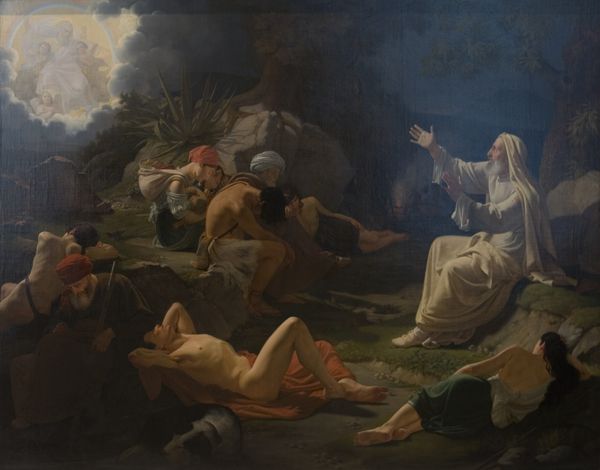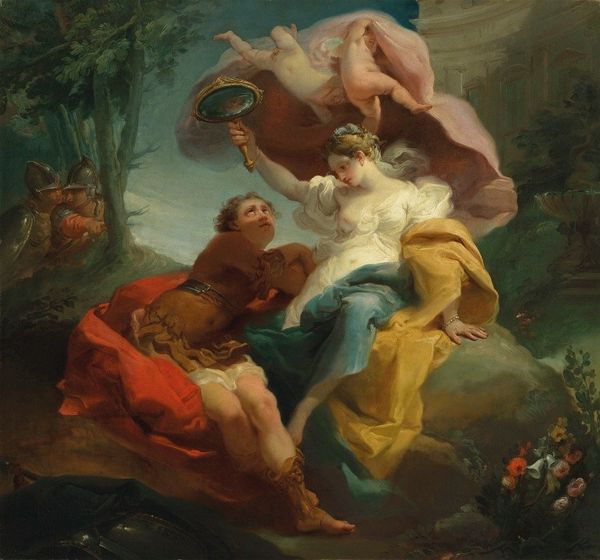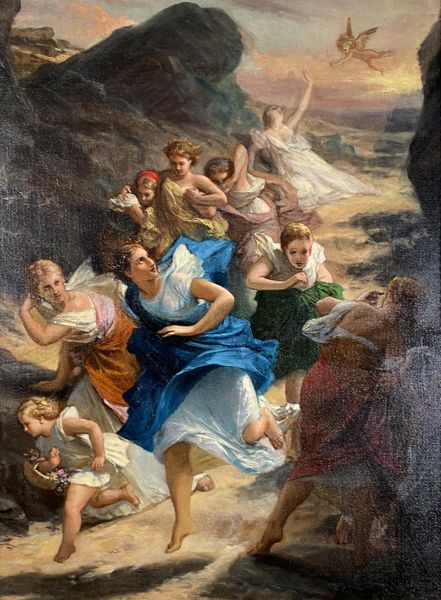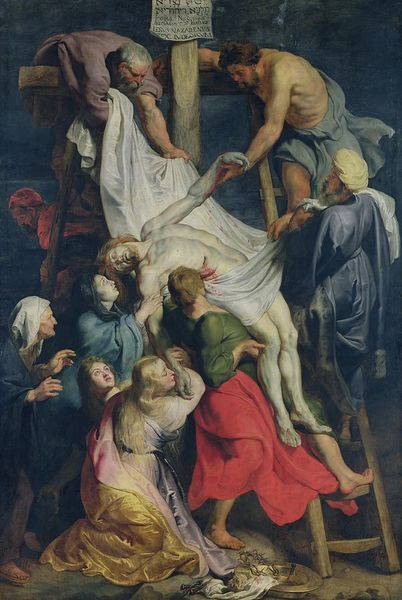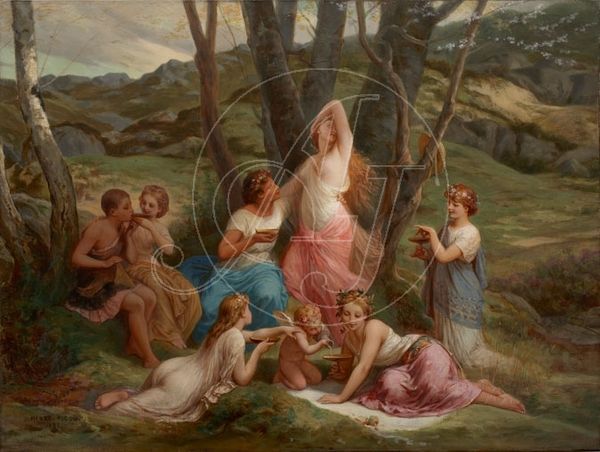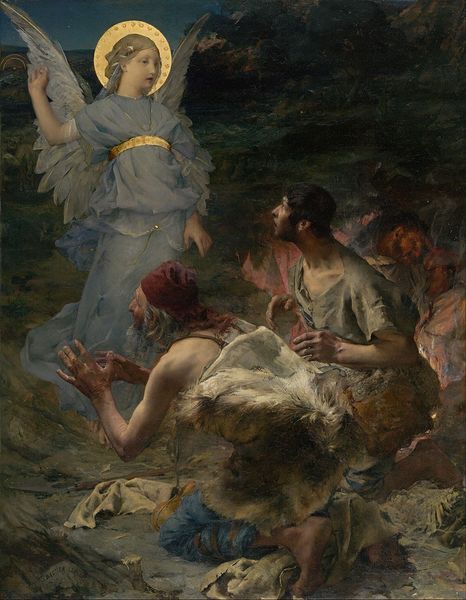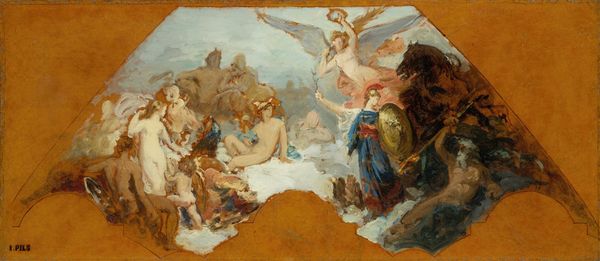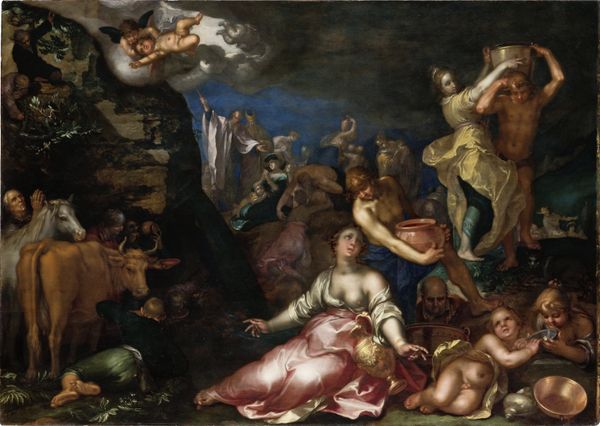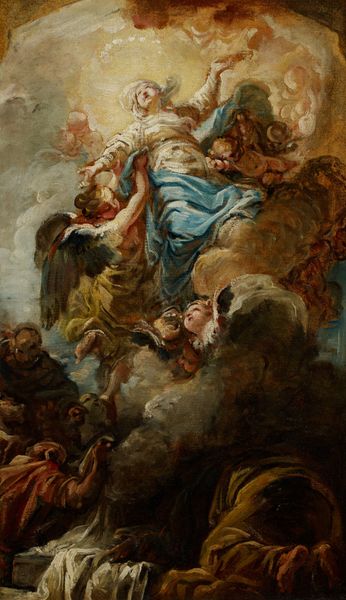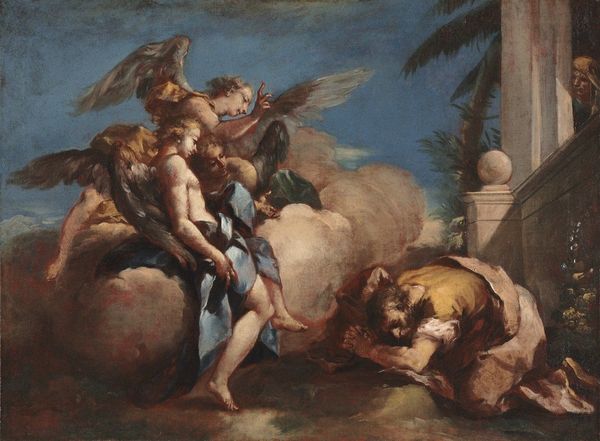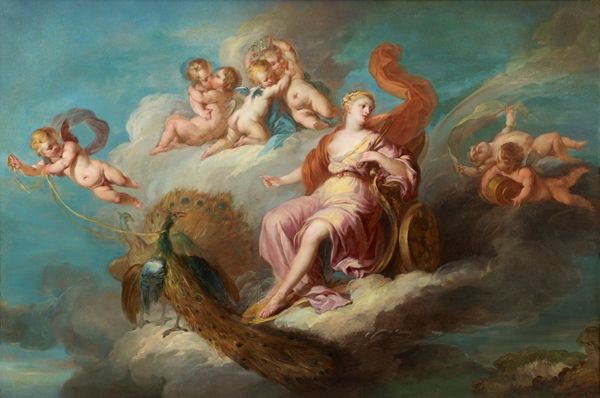
painting, oil-paint
#
narrative-art
#
painting
#
oil-paint
#
figuration
#
oil painting
#
romanticism
#
history-painting
#
academic-art
Copyright: Public Domain: Artvee
Editor: So here we have Alexandre Cabanel's "The Death of Moses," painted in 1850. The figures, rendered in oil paint, seem suspended between heaven and earth. There's a dramatic intensity in the scene. What's your read on this, looking at it through a material lens? Curator: Let’s consider the use of oil paint, a material developed and refined through centuries of workshops and artisanal labor. In Cabanel's hands, this medium facilitates a smooth, almost polished finish – reflecting the artistic demands and expectations of the 19th-century academic art world. Consider also the social context: The scale, likely produced in a large workshop, would speak to a particular market and patron. What kind of power dynamics do you see at play between the artist, the materials, and the commissioning body in a work like this? Editor: Well, the painting's size surely would have necessitated assistants, marking a division of labor. Also, the romanticized depiction could mask a more complex view of death. Is it possible that it turns into a sort of spectacle driven by consumption demands from patrons who wants elevated paintings? Curator: Exactly! By focusing on the "how" and the "for whom", we can challenge its idealization of mortality. The canvas and the pigments – these weren't spontaneously generated. Their production involved specific networks of trade, resource extraction, and even exploitation. Considering those unseen factors might change your impression of the finished work. What does academic art have to do with colonialism at the time? Editor: I never really considered the raw materials of art as part of the story of how history paintings could perpetuate cultural narratives. I am learning that exploring beyond the images reveals the layers of its creation and societal influences. Curator: Precisely. Examining the art through the material tells you as much about culture as aesthetic intentions.
Comments
No comments
Be the first to comment and join the conversation on the ultimate creative platform.
